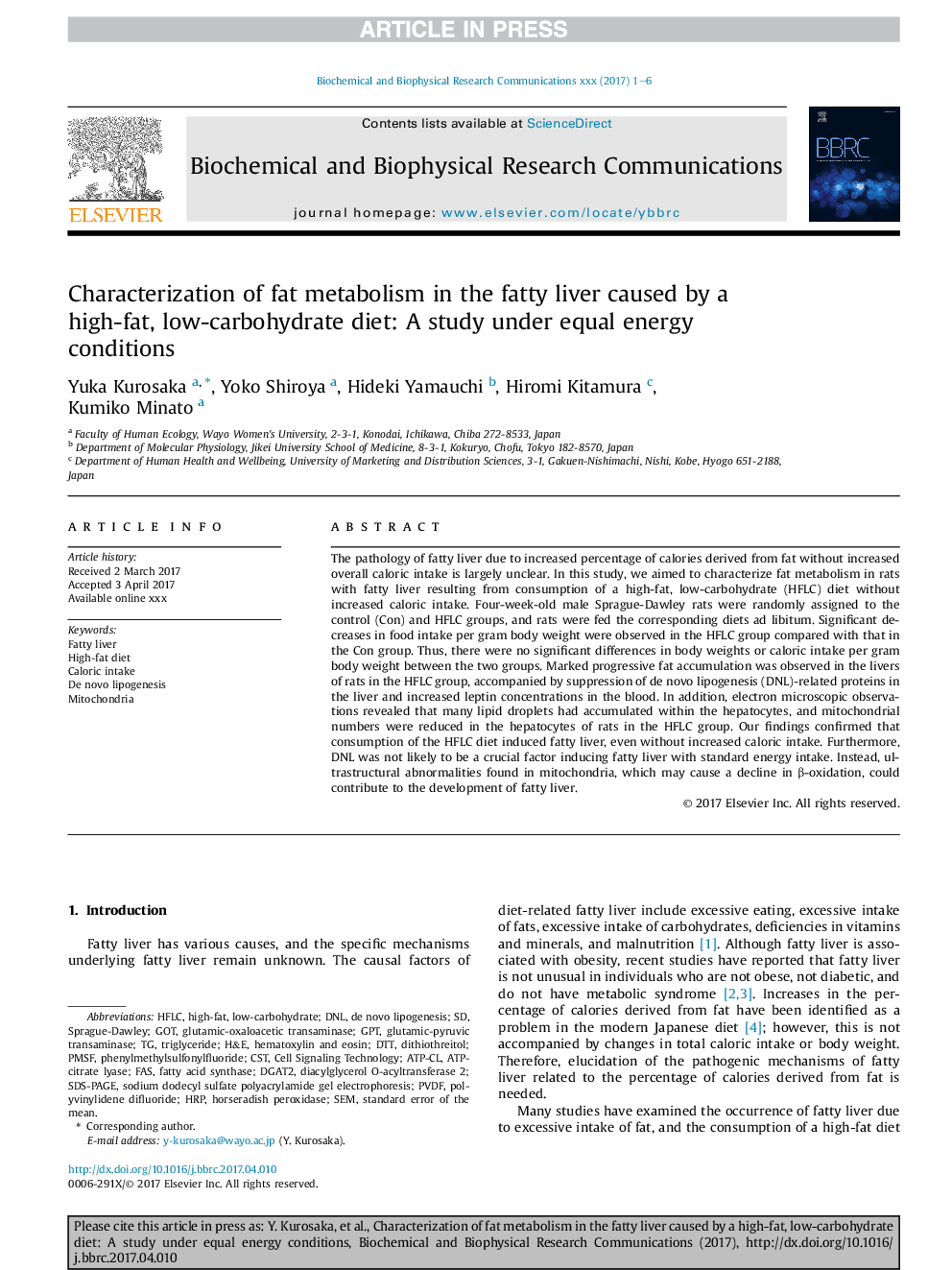| Article ID | Journal | Published Year | Pages | File Type |
|---|---|---|---|---|
| 5505742 | Biochemical and Biophysical Research Communications | 2017 | 6 Pages |
Abstract
The pathology of fatty liver due to increased percentage of calories derived from fat without increased overall caloric intake is largely unclear. In this study, we aimed to characterize fat metabolism in rats with fatty liver resulting from consumption of a high-fat, low-carbohydrate (HFLC) diet without increased caloric intake. Four-week-old male Sprague-Dawley rats were randomly assigned to the control (Con) and HFLC groups, and rats were fed the corresponding diets ad libitum. Significant decreases in food intake per gram body weight were observed in the HFLC group compared with that in the Con group. Thus, there were no significant differences in body weights or caloric intake per gram body weight between the two groups. Marked progressive fat accumulation was observed in the livers of rats in the HFLC group, accompanied by suppression of de novo lipogenesis (DNL)-related proteins in the liver and increased leptin concentrations in the blood. In addition, electron microscopic observations revealed that many lipid droplets had accumulated within the hepatocytes, and mitochondrial numbers were reduced in the hepatocytes of rats in the HFLC group. Our findings confirmed that consumption of the HFLC diet induced fatty liver, even without increased caloric intake. Furthermore, DNL was not likely to be a crucial factor inducing fatty liver with standard energy intake. Instead, ultrastructural abnormalities found in mitochondria, which may cause a decline in β-oxidation, could contribute to the development of fatty liver.
Keywords
GPTHflCATP-citrate lyasediacylglycerol O-acyltransferase 2DGAT2DNLPMSFHRPFASPVDFDTTCStH&Ede novo lipogenesisSprague-Dawleyfatty acid synthaseSDS-PAGESodium dodecyl sulfate polyacrylamide gel electrophoresisGOTGlutamic-oxaloacetic transaminasetriglyceridestandard error of the meanpolyvinylidene difluoridedithiothreitolhigh-fat dietPhenylmethylsulfonylfluorideSEMcaloric intakeMitochondriaHematoxylin and EosinHorseradish peroxidaseFatty liverglutamic-pyruvic transaminase
Related Topics
Life Sciences
Biochemistry, Genetics and Molecular Biology
Biochemistry
Authors
Yuka Kurosaka, Yoko Shiroya, Hideki Yamauchi, Hiromi Kitamura, Kumiko Minato,
